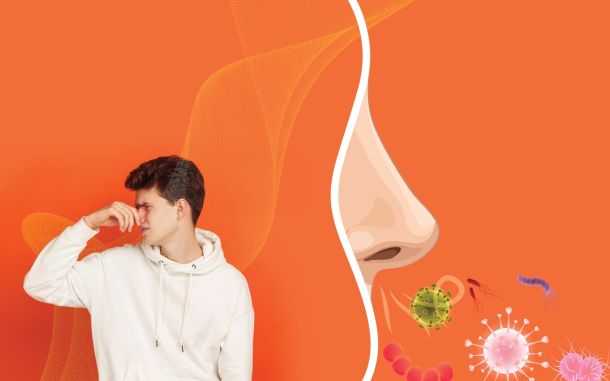
Vaccination becomes a part of our lives at a very early age. We start getting our shots in the first few months after we are born, when we start school, during flu season, or when a pandemic such as Covid erupts. However, there are still many people who oppose vaccines for various reasons, and their anti-vax position is not something that emerged with the arrival of Covid – it is as old as the first vaccine in human history. In this article, we will give a general definition and history of vaccination, the types of vaccines that exist, their contents, and will touch on some of the reasons for opposition.
What is a vaccine?
A vaccine is a biological preparation that provides active acquired immunity to a particular infectious disease. The first vaccine was introduced by British physician Edward Jenner in 1796, who used the cowpox virus (vaccinia) to confer protection against smallpox, a related virus, in humans.
A vaccine typically contains an agent that resembles a disease-causing microorganism. It is often made from weakened or killed forms of the microbe, its toxins, or one of its proteins. Vaccines stimulate the body's immune system to recognize the agent as a threat and destroy it. When the virulent version of an agent is encountered the body recognizes the protein coat on the virus and is prepared to respond. It first neutralizes the target agent before it can enter cells and then recognizes and destroys infected cells before that agent can multiply to vast numbers.
The administration of vaccines is called vaccination, and it is so far the most effective method of preventing infectious diseases. Vaccines help the body to produce antibodies, which are the human body's defensive cells that fight off any foreign substances. We can produce antibodies on our own, but some infections, including mild ones like chickenpox, can cause some people to get very sick and die before enough antibodies are produced. Vaccination helps our bodies be prepared by “imitating” an infection so that antibodies can be formed before the infection gets deadly.
Vaccines for several diseases have been very successful and provided widespread immunity due to worldwide vaccination. For example, smallpox was eradicated by worldwide vaccination and several others such as polio, measles, and tetanus have been brought under control. The effectiveness of vaccination has been widely studied and verified. Some other vaccines including influenza, HPV, and chickenpox have been proven to be effective. The World Health Organization (WHO) reports that licensed vaccines are currently available for twenty-five different preventable infections.
In the 1950s, before polio vaccines were available, polio caused more than 15,000 cases of paralysis each year in the United States. Following the introduction of vaccines, trivalent inactivated poliovirus vaccine in 1955 and trivalent oral poliovirus vaccine in 1963, the number of polio cases fell rapidly to less than 100 in the 1960s and fewer than 10 in the 1970s. Vaccination has also reduced the number of measles infections by more than 99 percent. As well as preventing the spread of infection and protecting the people, vaccines also help prevent the development of antibiotic resistance.
Some vaccines require a second dose in order to build up a strong enough immunity, such as MMR vaccines for Covid-19. Others, such as the tetanus vaccine, require a “booster shot” after a certain amount of time because the immunity of the first vaccine decreases over time. In the case of the flu, the main targets of the immune response may change slightly from year to year depending on which flu virus strains are circulating most that year thus often requiring a new vaccine every year.
Vaccine types
Vaccines typically contain dead or inactivated organisms or purified products derived from these organisms. There are several types of vaccines in use each of which represent different strategies to reduce the risk of illness while retaining the ability to induce a beneficial immune response.
They contain either:
- A weakened (attenuated) form of a pathogen.
- An inactivated form of a pathogen.
- Certain parts of a pathogen, such as its proteins.
- A weakened toxin made by the pathogen.
Attenuated vaccine: Some vaccines contain live, attenuated microorganisms. Many of these are active viruses that have been cultivated under conditions that disable their virulent properties or closely related but less dangerous organisms used to produce a broad immune response.
Attenuated vaccines have some advantages and disadvantages. Attenuated, or live, weakened vaccines typically provoke more durable immunological responses. But they may not be safe for use in individuals with weak immunity. These vaccines may rarely mutate to a virulent form and cause disease.
Inactivated vaccine: Some vaccines contain inactivated, but previously virulent, micro-organisms that have been destroyed with chemicals, heat, or radiation. The vaccines for polio, hepatitis A, and rabies, as well most influenza vaccines are good examples of this type.
Toxoid vaccine: Toxoid vaccines are made from inactivated toxic compounds that cause illness rather than the micro-organism. Examples of toxoid-based vaccines include tetanus and diphtheria vaccines.
Subunit vaccine: Rather than introducing an inactivated or attenuated micro-organism to an immune system, a subunit vaccine uses a fragment of it to develop an immune response (hepatitis B, human papillomavirus vaccine).
Conjugate vaccine: Some bacteria have a polysaccharide outer coat that is poorly immunogenic. These outer coats are linked to toxoid proteins and the immune system is led to recognize the polysaccharide as if it were a protein antigen. This approach is used in the Haemophilus influenzae type B vaccine.
Outer membrane vesicle vaccines: Outer membrane vesicles are naturally immunogenic and can be manipulated to produce potent vaccines. Serotype B meningococcal disease vaccines are good example to this type.
Heterologous vaccines (Jennerian vaccines): These are vaccines that are pathogens of other animals that either do not cause disease or cause mild disease in the organism being treated. The classic example is Jenner's use of cowpox to protect against smallpox. A current example is the use of BCG vaccine made from Mycobacterium bovis to protect against tuberculosis.
Viral vector vaccines: These vaccines use a safe virus to insert pathogen genes in the body to produce specific antigens, such as surface proteins, to stimulate an immune response.
RNA vaccines: An mRNA vaccine (or RNA vaccine) is a novel type of vaccine which is composed of the nucleic acid RNA packaged within a vector such as lipid nanoparticles. Many vaccines put a weakened or inactivated germ into our bodies to trigger an immune response. But instead, mRNA vaccines teach our cells how to make a protein or even just a piece of a protein that triggers an immune response inside our bodies. Among the COVID-19 vaccines are a number of RNA vaccines under development to combat the COVID-19 pandemic and some have received emergency use authorization in most countries.
Other contents of a vaccine
A vaccine dose contains many ingredients, very little of which is the active ingredient called the immunogen. Other ingredients are added to boost the immune response, to ensure safety or help with storage, and a tiny amount of leftover material from the manufacturing process. These materials can very rarely cause an allergic reaction in people who are very sensitive to them.
Adjuvants: Vaccines typically contain one or more adjuvants which are used to boost the immune response. This presents the antigen in such a way as to produce a greater action than the simple aqueous tetanus toxoid.
Preservatives: Vaccines may also contain preservatives to prevent contamination with bacteria or fungi.
Excipients: Beside the active vaccine itself, some excipients and residual manufacturing compounds are present or may be present in vaccine preparations (e.g. aluminum salts or gels antibiotics, egg proteins, formaldehyde monosodium glutamate). These are added to some vaccines to prevent the growth of bacteria during production and storage of the vaccine.
Vaccine licensing
A vaccine can be licensed after the successful conclusion of the development cycle and further successful clinical trials. Clinical Phases I–III are necessary for licensing and safety, immunoactivity, immunogenetic safety at a given specific dose should be demonstrated. Also, the effectiveness in preventing infection for populations that will be vaccinated should be proven. For each vaccine the time endurance or need for revaccination must be estimated. Vaccine manufacturers do not receive licensing until a complete clinical cycle of development and trials proves the vaccine is safe and has long-term effectiveness. Then, it has to be reviewed and licensed by a multinational or national regulatory organization.
Vaccination failure or adverse effects
Sometimes protection with vaccines fails because of failures in vaccine attenuation. It may be related with the host's immune system as it simply does not respond adequately or at all. Lack of response commonly results from genetics, immune status, age, health, or nutritional status. Sometimes the host develops antibodies but the protection might not be adequate; immunity might develop too slowly to be effective in time; or the antibodies might not disable the pathogen completely. Additionally, there might be multiple strains of the pathogen not all of which are equally susceptible to the immune reaction. But even in this case, a partial, late, or weak immunity, may mitigate an infection and result in a lower death rate, milder complications from an infection, or faster recovery.
Vaccinations given to children, adolescents, or adults are considered safe. They may cause generally mild adverse effects. Some common side effects include fever, pain around the injection site, and muscle aches. Additionally, some individuals may be allergic to ingredients in the vaccine. Such reactions are exceptionally rare occurring in less than one in a million people for most vaccines. Severe reactions also tend to affect only certain populations such as persons whose immune systems are compromised by preexisting disease (e.g., HIV/AIDS) or who are undergoing chemotherapy.
Do vaccines cause autism?
Claims have been made that vaccines are responsible for certain adverse health conditions, particularly autism, speech disorders, and inflammatory bowel disease. Some of those claims focused on thimerosal, a mercury-containing compound used as a preservative in vaccines.
Thimerosal is a mercury-containing antimicrobial that is added to vials of vaccines that contain more than one dose to prevent contamination and growth of potentially harmful bacteria. Some people believed that autism was a form of mercury poisoning and was caused specifically by thimerosal in childhood vaccines. But those claims have been discredited. Because of all these accusations against thimerosal, it has been removed from most vaccines except multi-use influenza. Even in these vaccines, it was reduced to levels so that a single dose contained less than a microgram of mercury, a level similar to eating ten grams of canned tuna.
Misinformation and fear generated by false claims about associations between autism and vaccines had a significant impact on people regarding vaccine safety especially for kids. But in reality, most people in countries where vaccination is widespread have never experienced vaccine preventable diseases. In this case, the focus of concern for some people changed from the negative effects of vaccine preventable disease to the possible negative effects of the vaccines themselves.
Some concerns over the effects of vaccination led to decreasing levels of vaccination coverage in some areas of the world. As a result, not only were individuals susceptible to vaccine-preventable diseases, vaccination rates dropped low enough to cause losses of herd immunity thereby allowing outbreaks of disease.
Normally, germs can travel quickly through a community and make a lot of people sick. If enough people get sick it can lead to an outbreak. But when enough people are vaccinated against a certain disease, “herd immunity, aka community immunity, is formed and it becomes harder for that disease to spread to others. Community immunity is especially important for people who cannot get certain vaccines. For example, they may not be able to get a vaccine because they have weakened immune systems. Others may be allergic to certain vaccine ingredients. Newborn babies are too young to get some vaccines. Community immunity can help to protect vulnerable populations such as these ones.
If there are outbreaks of disease because of the lack of enough vaccination outbreaks may bring high costs to countries, especially in terms of health and medical care, economic strain, and loss of life. All of the world experienced this with the lack of a vaccine for COVID-19 disease in the first year of the virus’ spread.
Some people reject certain drugs or treatment methods on the grounds that they are not halal or kosher and do not comply with their beliefs. Prophet Muhammad (peace be upon him) said that “God did not send down a disease without having sent down its cure.” This Prophetic statement indicates that there are remedies for every disease yet to be discovered by scientists. Many religious scholars rule that certain things that are forbidden under normal circumstances can be allowed in times of need, which in this case is the danger of death or the risk for loss of any organ. This rule should direct faithful scientists to work harder to find drugs or therapeutic methods that fit their beliefs.
In conclusion, vaccines protect our communities through collective immunity. The World Health Organization (WHO) estimates that immunization prevents between 2 to 3 million deaths each year. Ending vaccination could be very dangerous. Even in the 21st century, many vaccine-preventable deaths still occur because vaccines are not available to everyone. One of the missions of the World Health Organization is to increase vaccine availability to everyone including poor countries.
References
- https://www.infoplease.com/math-science/health/healthcare/vaccines
- https://health.clevelandclinic.org/vaccine-faqs-how-are-vaccines-developed-and-how-do-they-work/
- https://medlineplus.gov/vaccines.html
- https://www.healthline.com/health/vaccinations#if-we-stopped
- https://www.britannica.com/science/vaccine/Benefits-of-vaccination
- https://en.wikipedia.org/wiki/Vaccine









